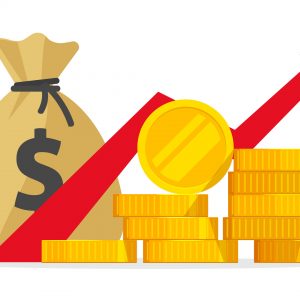
Five Steps Towards Building a Passive Aggressive Portfolio
By: Steve Smith
The trend of index or “passive” investing accelerated following the financial crisis and seems to now represent a generational shift in the way investors approach the stock market. Namely, they don’t necessarily trust it or those that dispense advice but they acknowledge stocks are still one of the best ways to build wealth.
So, while “passive” is all the rage one astute reader, Pete, noted, “Steve, isn’t the fact that one chooses to invest in stocks, no matter what the vehicle, by definition makes him an active investor… “
This is a great insight and allows us to continue my prior take on passive/aggressive investing. Let’s go the next step and lay out five steps how one can be “actively passive to generate Alpha”
We need to start with the premise that the term “passive” has become too pervasive to cover any index or ETF that has low fees that allows investors to move in and out of them day to day or even minute to minute. This fluidity cuts both ways so let’s see how we can harness the power have a basket of stocks at our disposal.
1.Index Construction
Investors and the media view some popular indexes as gospel in terms of being representatives of the market. But really, all of them are rules-based systems designed by humans (with a variety of motivations) who made decisions in constructing them. How do stocks get added and removed?
Are there caps to one stock’s weight? How often will it rebalance? Reconstitute?
For example, the S&P 500 Index is overseen by a committee of market professionals who basically decide what stocks to include.
They’re literally stock picking, albeit not in the alpha-seeking sense. Or consider the Dow Jones Industrial Average, which only tracks 30 stocks with seemingly random weightings determined by whatever the price per share is of each.
2.Portfolio Management
When it comes to running an index fund or ETF, it’s easy to imagine there’s no manager, or it’s perhaps some mainframe computer. But quite the contrary: A human portfolio manager is in that role, playing what can be referred to as a game of basis points. On one hand, they play defense by combating front-running; keeping up with dividends, spinoffs, and warrants and trying to avoid capital gains. At the same time, they play offense by trying to eat up some of the expense ratio and inch closer to perfect tracking of the index
You can tell how well passive managers play this game by using an underrated metric called “tracking difference,” which basically measures how far off an index fund or ETF is from its index’s return. This metric is arguably the true cost of the fund, since it is net of fees. For example, an Index Fund, which charges .05%, but only missed its index over the last few years by .01% is rebating investors .04% via the game of basis points.
